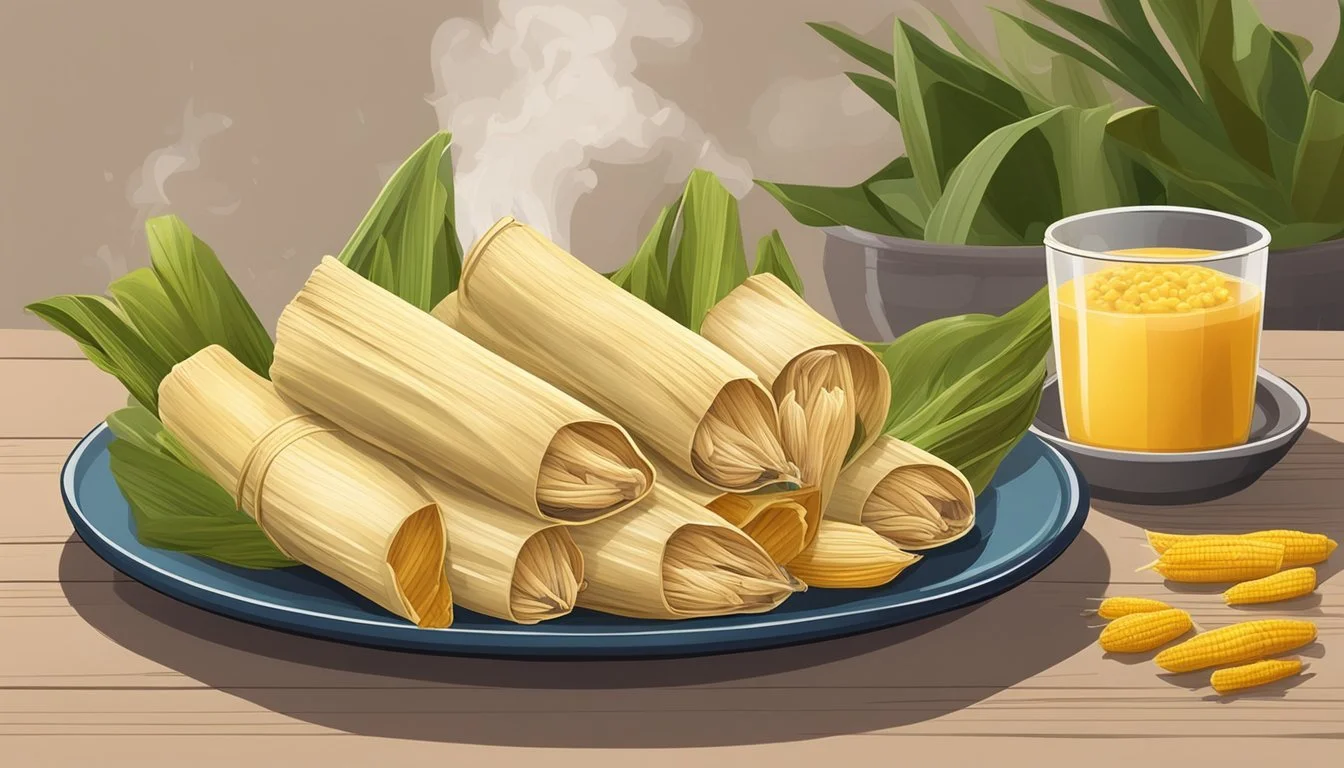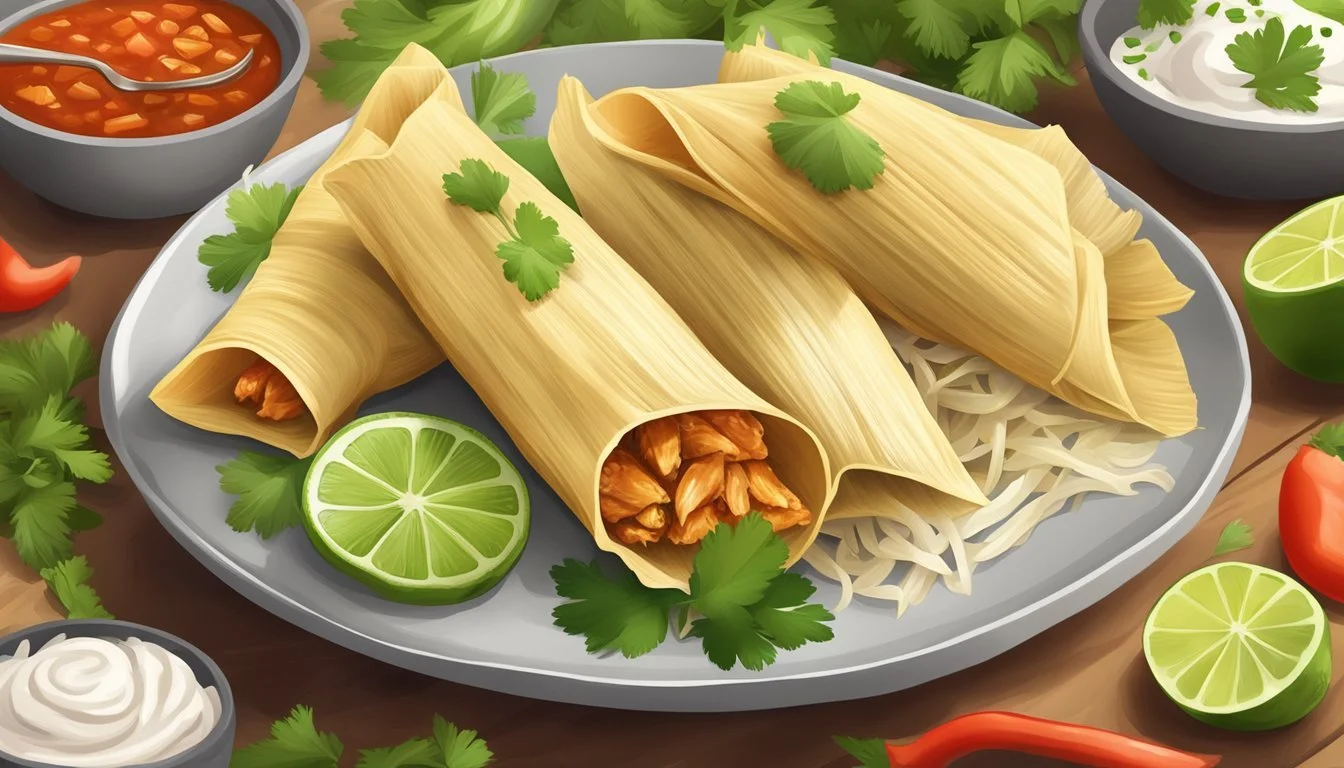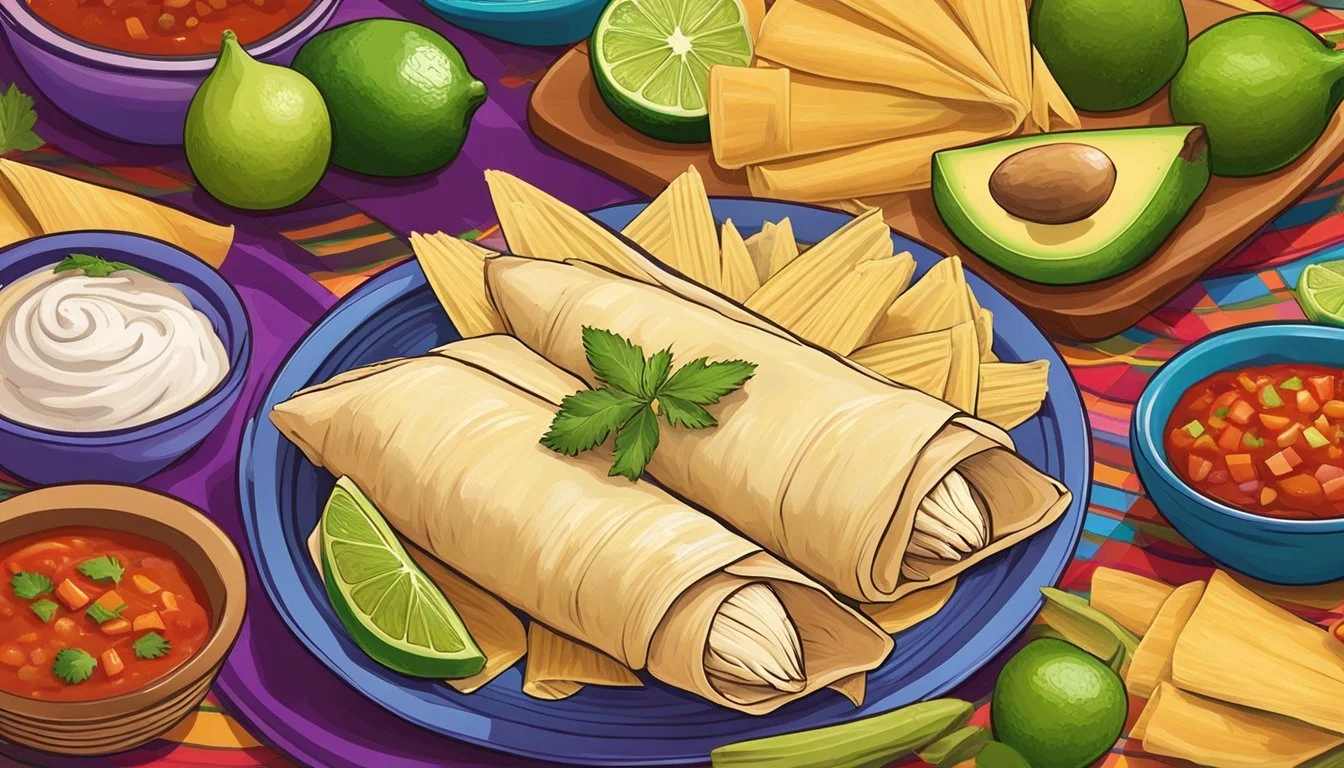How Long Do Chicken Tamales Last?
Storage Tips and Shelf Life
Chicken tamales are a delectable treat enjoyed by many, favoring their rich taste and satisfying texture. When stored correctly, these delicious parcels can remain safe to eat for a notable period. Cooked chicken tamales last up to one week when kept in the refrigerator, and about six months if stored in the freezer.
For those who like to prepare ahead, uncooked chicken tamales offer some flexibility. They can be kept in the fridge for up to four or five days before needing to be cooked. Knowing how to properly store both cooked and uncooked tamales is essential for maintaining their quality and ensuring food safety.
Overview of Chicken Tamales
Chicken tamales are a beloved dish, deeply rooted in Mexican culture and culinary traditions. These tamales are composed of various unique ingredients and are prepared using specific methods, carrying significant cultural value across Mesoamerica.
Traditional Ingredients and Preparation
The primary ingredients in chicken tamales include masa dough, chicken, and corn husks or sometimes banana leaves. Masa dough is created from ground corn, often mixed with lard to ensure a rich, smooth texture. The filling comprises seasoned chicken, typically cooked with a combination of spices and sometimes vegetables like tomatoes and onions.
Tamales are wrapped in corn husks, forming a neat package that is steamed to perfection. The use of corn husks is traditional, but banana leaves can serve as an alternative. The process is labor-intensive, often carried out during communal gatherings, highlighting the social aspect of tamale preparation.
Varieties and Cultural Significance
Chicken tamales come in various forms, including the addition of other ingredients like pork, cheese, or vegetarian options. Some versions might be cooked with rich, green or red salsas, enhancing the flavor profile. In Mexico, tamales are often served during festivals and celebrations, reflecting their importance in cultural and familial traditions.
Chicken tamales can vary significantly in different regions, showcasing local ingredients and cooking styles. This dish's versatility extends even to vegan and vegetarian options, where masa dough might be filled with vegetables or other meat substitutes, wrapped in either corn husks or banana leaves.
Proper Storage Techniques
Proper storage of chicken tamales is essential to maintain their flavor and prevent spoilage. Below are guidelines on immediate storage after cooking, long-term storage solutions, and avoiding contamination and spoilage.
Immediate Storage after Cooking
Once chicken tamales are cooked, they should cool to room temperature. This step is crucial to prevent moisture accumulation, which can lead to sogginess. After cooling, individually wrap each tamale in plastic wrap or aluminum foil.
Place the wrapped tamales in an airtight container or a large resealable plastic bag. Ensure as much air as possible is removed before sealing. These steps help maintain freshness and prevent the tamales from drying out. Refrigeration should follow; tamales stored in the fridge maintain their quality for 3-4 days.
Long-Term Storage Solutions
For periods longer than a few days, freezing tamales is the best option. After cooling and wrapping the tamales as described, place them in freezer bags or airtight containers.
Removing excess air is critical for preventing freezer burn. Labeling the containers with dates helps track their storage duration. Frozen chicken tamales can last up to 6 months in the freezer. When reheating, steaming the tamales straight from the freezer ensures they retain moisture and texture, adding 10 minutes to the steaming time compared to fresh tamales.
Avoiding Contamination and Spoilage
Preventing cross-contamination is paramount. Always use clean hands and utensils when handling tamales. Store tamales away from raw foods in the fridge or freezer to avoid contamination risks. Utilize parchment paper between layers of tamales in storage to keep them from sticking together and to add an extra barrier against moisture.
Regularly check the stored tamales’ condition. Discard any tamales if they show signs of mold or an off smell. This practice ensures the tamales remain safe and enjoyable to eat for as long as possible. Adequate food storage techniques lengthen the shelf-life and safety of chicken tamales significantly.
Shelf Life Determinants
Chicken tamales have a specific shelf life influenced by various factors. To maintain freshness and safety, it's vital to comprehend these determinants and recognize spoilage signs.
Factors Affecting Freshness and Safety
The freshness and safety of chicken tamales are influenced by several factors. Ingredients play a significant role; tamales with meat, especially chicken, are prone to faster spoilage due to bacteria growth. Cooking and storage methods are also crucial. Properly cooked tamales should reach an internal temperature of 165°F to kill harmful bacteria like salmonella.
Refrigeration extends the shelf life to around five to seven days, but they are best consumed within three to four days for optimal texture and flavor. Using airtight containers reduces exposure to air, slowing down spoilage. Tamales stored at room temperature should be discarded after two hours to avoid health risks.
Identifying Signs of Spoilage
Recognizing spoilage signs is essential for safety. Visual indicators such as mold or discoloration suggest tamales are no longer safe to eat. A sour or off smell also indicates bacterial growth and spoilage.
Texture and flavor changes can be subtle but are critical signs. Mushy or overly dry tamales, compared to their fresh state, suggest a decline in quality. Health risks like ingesting toxins produced by bacteria can occur if tamales are consumed beyond their safe shelf life. Always discard tamales showing any adverse changes to prevent foodborne illnesses.
By understanding these factors and remaining vigilant for spoilage signs, the shelf life of chicken tamales can be maximized while ensuring they remain safe and enjoyable to eat.
Freezing and Thawing Procedures
Freezing chicken tamales helps extend their shelf life significantly, making it easy to enjoy them at a later date. Effective thawing and reheating methods ensure the tamales maintain their flavor and texture.
How to Freeze Chicken Tamales
To freeze chicken tamales, start by allowing them to cool completely at room temperature. This step prevents condensation and reduces the risk of freezer burn. Wrap each tamale individually using plastic wrap or aluminum foil. This makes thawing and reheating easier.
Next, place the wrapped tamales in a freezer bag or an airtight container. Removing as much air as possible before sealing the bag helps preserve the quality. Label the container with the freezing date so you can track storage time accurately. When stored properly, cooked tamales can last up to six months in the freezer.
Thawing and Reheating Methods
To thaw frozen tamales, transfer them from the freezer to the refrigerator and let them sit for several hours or overnight. This slow thawing method helps retain the tamales’ texture. Once thawed, there are various reheating methods:
Oven: Preheat the oven to 425°F (220°C). Place the tamales on a baking sheet and cover them with aluminum foil. Heat for about 30 minutes or until fully warmed.
Microwave: Wrap the tamales in a damp paper towel and place them in a microwave-safe dish. Heat on high for 2-3 minutes, checking and turning them halfway through.
Steaming: Place tamales in a steamer basket over boiling water. Steam for about 15-20 minutes or until heated through.
Using these methods ensures that the tamales remain delicious and maintain their original texture.
Safe Consumption and Food Safety
Ensuring the safe consumption of chicken tamales involves understanding the risks of food poisoning and adopting best practices for serving and transport. Proper handling, cooking, and storage can help mitigate these risks.
Understanding Food Poisoning Risks
Food poisoning can occur if chicken tamales are not cooked or stored properly. Chicken, being a meat product, can harbor pathogens like Salmonella and Campylobacter. These bacteria can grow rapidly if the tamales are left at room temperature for more than two hours.
To minimize bacterial growth, cooked tamales should be reheated to an internal temperature of 165°F (74°C). This temperature ensures that harmful bacteria are killed. Keeping tamales in the refrigerator for up to one week or in the freezer for up to six months is ideal for food safety.
Best Practices for Serving and Transport
Serving chicken tamales should be done carefully. Use clean plates and napkins to prevent contamination. After reheating, tamales should be consumed promptly to avoid any potential risks. If tamales are being transported, they should be kept at safe temperatures.
When transporting, use coolers with ice packs to keep tamales cold. If carrying cooked tamales, ensure they are kept hot until served by wrapping them in aluminum foil and placing them in an insulated container. For frozen tamales, make sure there are no ice crystals present as this could indicate thawing and refreezing, which might compromise safety.
Following these steps helps to ensure that chicken tamales remain safe and delicious for everyone to enjoy.
Enhancing the Tamale Experience
Tamales can be enjoyed even more with thoughtful pairings and creative use of leftovers.
Pairings and Serving Suggestions
Pairing tamales with the right sides enhances their flavor. For a balanced meal, consider serving them with fresh salsa or a dollop of guacamole. The acidity and freshness complement the savory filling. Rice and beans also make excellent sides, adding texture and a hearty component to the dish.
For a touch of sweetness, serve tamales with a side of fruit salad. This adds a refreshing contrast to the spiced tamale filling. Dairy options like sour cream or crema provide a creamy balance. Beverage choices such as Mexican hot chocolate or Atole also enhance the experience and complement the flavors.
Creative Leftover Ideas
Leftover chicken tamales can be transformed into new, delicious dishes. Tamale bowls are a great option: simply break up the tamales and serve them over rice, topped with salsa, cheese, and avocado. This makes for a quick and easy meal.
Another idea is to use tamales in enchiladas. Layer tamales with cheese, roll them up in corn tortillas, and bake them with enchilada sauce. For a breakfast twist, scramble up some eggs with tamale pieces and top with sour cream. This dish combines the savory tamale with the fluffiness of eggs, making a satisfying morning meal.







